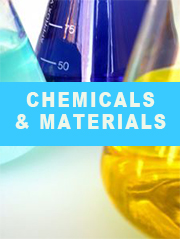Report overview
Solvent naphtha, which are composed of a mixture of hydrocarbons, are used in a variety of application areas and are incorporated in great number of formulated chemical products, including: architectural paints and protective coatings; printing inks and printing press cleaners; other cleaing compounds; pesticides; degreasing formulations; and household products. Solvent naphtha is a general term as each refinery produces its own naphtha with unique initial and final boiling points and other physical and composition characteristics.
This report aims to provide a comprehensive presentation of the global market for Light Aromatic Solvent Naphtha (Petroleum), with both quantitative and qualitative analysis, to help readers develop business/growth strategies, assess the market competitive situation, analyze their position in the current marketplace, and make informed business decisions regarding Light Aromatic Solvent Naphtha (Petroleum). This report contains market size and forecasts of Light Aromatic Solvent Naphtha (Petroleum) in global, including the following market information:
Global Light Aromatic Solvent Naphtha (Petroleum) Market Revenue, 2018-2023, 2024-2029, ($ millions)
Global Light Aromatic Solvent Naphtha (Petroleum) Market Sales, 2018-2023, 2024-2029, (Tons)
Global top five Light Aromatic Solvent Naphtha (Petroleum) companies in 2022 (%)
The global Light Aromatic Solvent Naphtha (Petroleum) market was valued at US$ 9212.2 million in 2022 and is projected to reach US$ 12140 million by 2029, at a CAGR of 4.0% during the forecast period. The influence of COVID-19 and the Russia-Ukraine War were considered while estimating market sizes.
Global Solvent Naphtha key players include Shell, ExxonMobil, SK, Total, Dow, etc. Global top five manufacturers hold a share about 40%. USA and Europe is the largest market, both with a share about 25%, followed by China, with a share about 20 percent. In terms of product, Paraffin Solvent is the largest segment, with a share about 40%. And in terms of application, the largest application is Paints & Coatings, followed by Rubber & Resin, Agro Chemicals, Printing Inks, Industrial Cleaning, etc.
We surveyed the Light Aromatic Solvent Naphtha (Petroleum) manufacturers, suppliers, distributors and industry experts on this industry, involving the sales, revenue, demand, price change, product type, recent development and plan, industry trends, drivers, challenges, obstacles, and potential risks.
Total Market by Segment:
Global Light Aromatic Solvent Naphtha (Petroleum) Market, by Type, 2018-2023, 2024-2029 ($ Millions) & (Tons)
Global Light Aromatic Solvent Naphtha (Petroleum) Market Segment Percentages, by Type, 2022 (%)
Purity?98%
Purity?99%
Other
Global Light Aromatic Solvent Naphtha (Petroleum) Market, by Application, 2018-2023, 2024-2029 ($ Millions) & (Tons)
Global Light Aromatic Solvent Naphtha (Petroleum) Market Segment Percentages, by Application, 2022 (%)
Paints & Coatings
Agro Chemicals
Rubber & Resin
Printing Inks
Others
Global Light Aromatic Solvent Naphtha (Petroleum) Market, By Region and Country, 2018-2023, 2024-2029 ($ Millions) & (Tons)
Global Light Aromatic Solvent Naphtha (Petroleum) Market Segment Percentages, By Region and Country, 2022 (%)
North America
US
Canada
Mexico
Europe
Germany
France
U.K.
Italy
Russia
Nordic Countries
Benelux
Rest of Europe
Asia
China
Japan
South Korea
Southeast Asia
India
Rest of Asia
South America
Brazil
Argentina
Rest of South America
Middle East & Africa
Turkey
Israel
Saudi Arabia
UAE
Rest of Middle East & Africa
Competitor Analysis
The report also provides analysis of leading market participants including:
Key companies Light Aromatic Solvent Naphtha (Petroleum) revenues in global market, 2018-2023 (Estimated), ($ millions)
Key companies Light Aromatic Solvent Naphtha (Petroleum) revenues share in global market, 2022 (%)
Key companies Light Aromatic Solvent Naphtha (Petroleum) sales in global market, 2018-2023 (Estimated), (Tons)
Key companies Light Aromatic Solvent Naphtha (Petroleum) sales share in global market, 2022 (%)
Further, the report presents profiles of competitors in the market, key players include:
Shell
ExxonMobil
TotalEnergies
SK Geo Centric
Hanwha Total
Flint Hills Resources
Haltermann Carless
Braskem
DHC Solvent Chemie
Ganga Rasayanie
Sinopec
CNPC
Jiangsu Hualun Chemical
Suzhou Jiutai Group
Outline of Major Chapters:
Chapter 1: Introduces the definition of Light Aromatic Solvent Naphtha (Petroleum), market overview.
Chapter 2: Global Light Aromatic Solvent Naphtha (Petroleum) market size in revenue and volume.
Chapter 3: Detailed analysis of Light Aromatic Solvent Naphtha (Petroleum) manufacturers competitive landscape, price, sales and revenue market share, latest development plan, merger, and acquisition information, etc.
Chapter 4: Provides the analysis of various market segments by type, covering the market size and development potential of each market segment, to help readers find the blue ocean market in different market segments.
Chapter 5: Provides the analysis of various market segments by application, covering the market size and development potential of each market segment, to help readers find the blue ocean market in different downstream markets.
Chapter 6: Sales of Light Aromatic Solvent Naphtha (Petroleum) in regional level and country level. It provides a quantitative analysis of the market size and development potential of each region and its main countries and introduces the market development, future development prospects, market space of each country in the world.
Chapter 7: Provides profiles of key players, introducing the basic situation of the main companies in the market in detail, including product sales, revenue, price, gross margin, product introduction, recent development, etc.
Chapter 8: Global Light Aromatic Solvent Naphtha (Petroleum) capacity by region & country.
Chapter 9: Introduces the market dynamics, latest developments of the market, the driving factors and restrictive factors of the market, the challenges and risks faced by manufacturers in the industry, and the analysis of relevant policies in the industry.
Chapter 10: Analysis of industrial chain, including the upstream and downstream of the industry.
Chapter 11: The main points and conclusions of the report.
